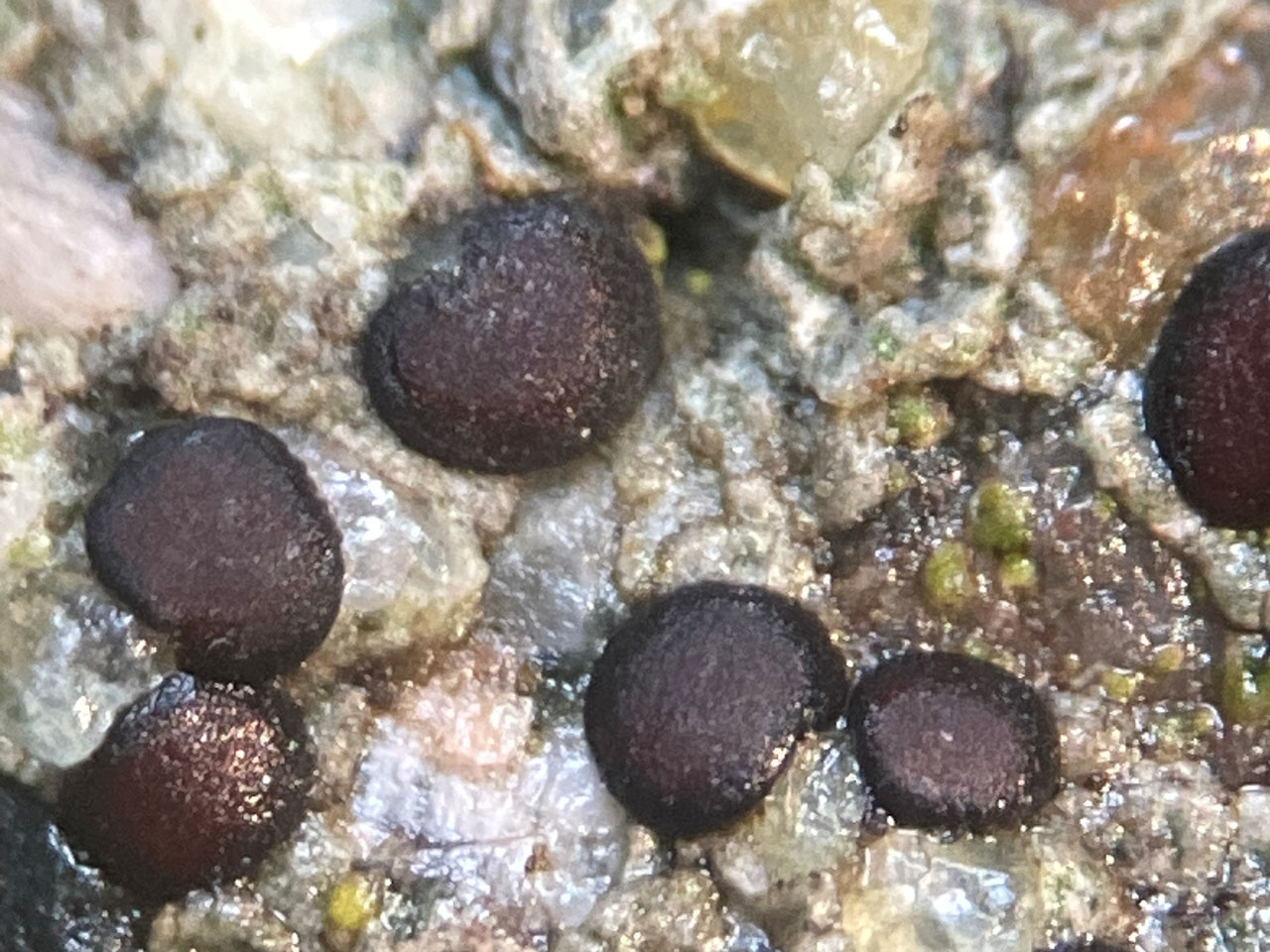A pioneer species of calcareous substrates, natural and anthropogenic, frequent in lowland areas. The dark apothecia discs are generally densely blue-grey pruinose but look red-brown when wet. Internally the multispored asci with about 100 to 200 spores are distinctive.
Thallus generally immersed and inconspicuous, or white to grey and scurfy. Apothecia sessile or ± sunken into pits in the substrate, (0.3–) 0.4–1.5 (–2) mm diam.; disc red-brown to black, generally densely blue-grey pruinose but sometimes not; exciple black, often more densely pruinose than the disc and then white-grey, not or slightly raised, not crenulate, finally becoming excluded, to 50 μm thick; hymenium (65–) 70–100 (–110) μm tall; hypothecium ± colourless. Asci 60–85 × 14–18 μm, 100- to 200-spored. Ascospores 3–5 (–6) × 1.5–2 μm. Conidiomata unknown.
Morphs with red-brown, densely pruinose apothecia embedded in pits in the substrate, usually hard limestones, are sometimes distinguished as a separate species, ‘S. pruinosa auct.’, the status and correct name of which remains unclear. Specimens lacking pruina are rare but occur.
On calcareous rocks, walls, chalk pebbles, sea-shells, asbestos-cement and old mortar, particularly in lowland areas.

Frequent, throughout Britain and Ireland, less frequent in the uplands.
Knudsen, K., Kocourková, J., Cannon, P., Coppins, B., Fletcher, A. & Simkin, J. (2021). Acarosporales: Acarosporaceae, including the genera Acarospora, Caeruleum, Myriospora, Pleopsidium, Sarcogyne and Trimmatothelopsis. Revisions of British and Irish Lichens 12: 1-25.
Text by Neil A Sanderson, based on Knudsen et al (2021)



